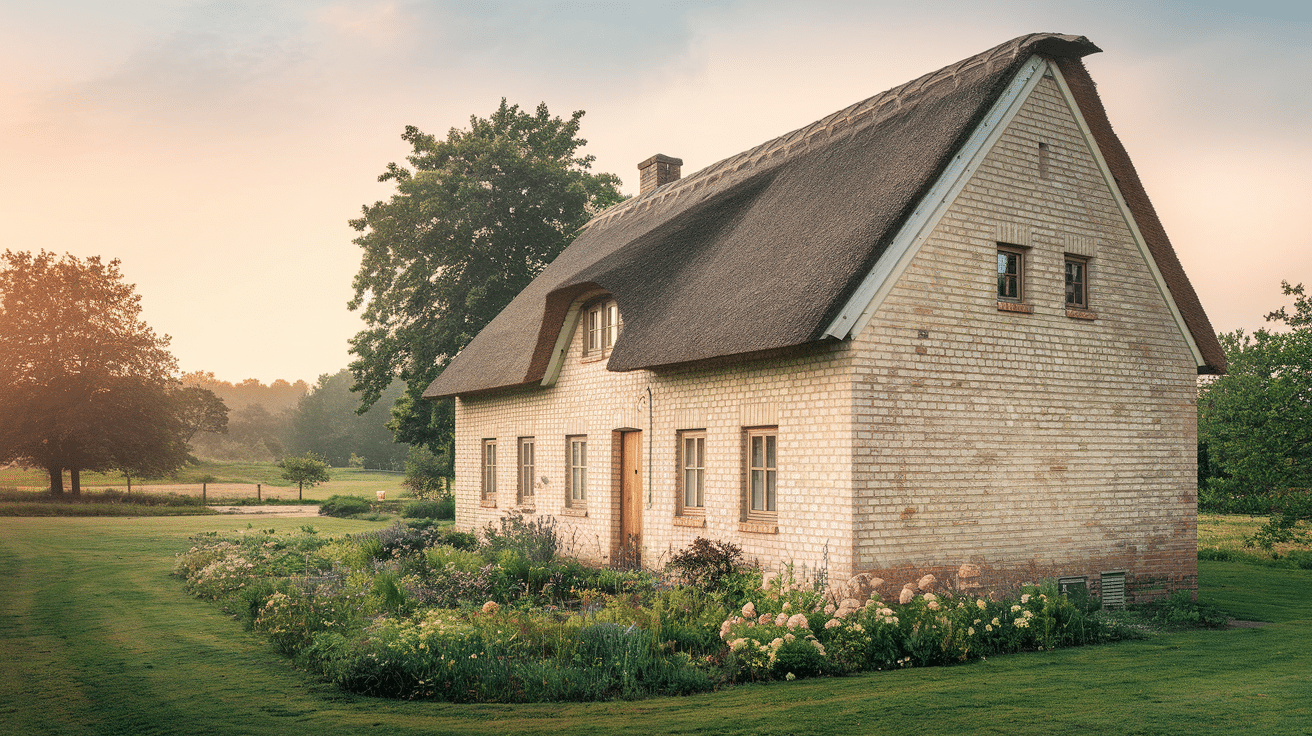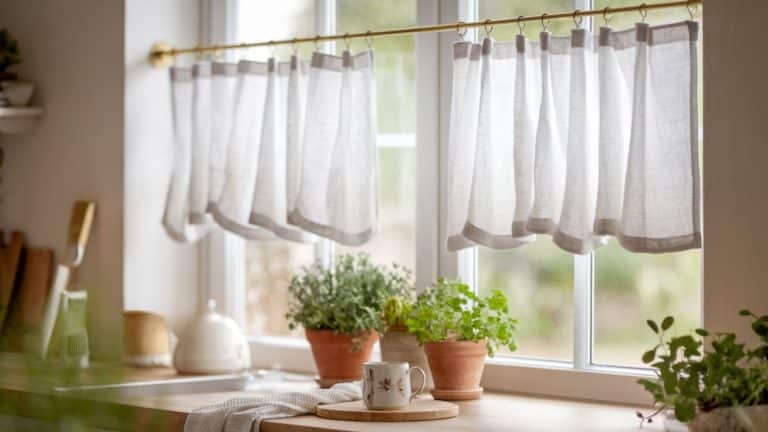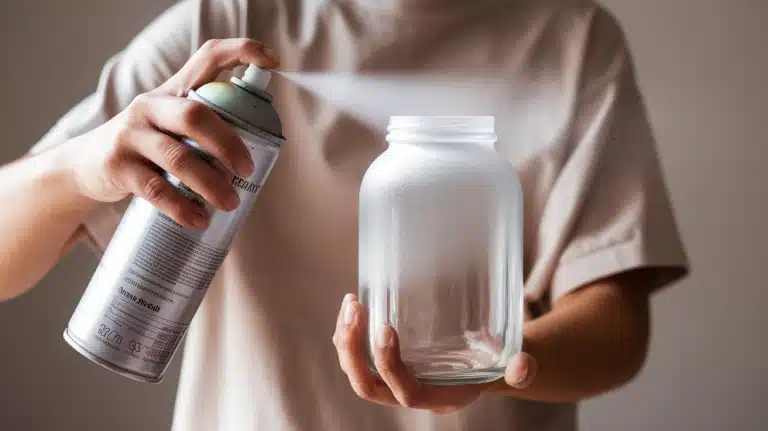From Plain to Pretty: Guide to Lime Washing Brick
Does your brick exterior need a fresh look? Many homeowners want to update their homes without spending too much money.
Lime washing is a simple fix. This old-world technique costs less than paint and gives brick surfaces a soft, aged finish. The best part? You can do it yourself.
This guide walks you through the lime washing process from start to finish. You’ll learn the materials you need for the job, how to prepare your brick surface, tips for proper application, and ways to control the final look.
By the end, you’ll know exactly how to give your brick a beautiful, time-worn finish that fits your style.
Let’s start with the basics.
Step-by-Step Process for Lime Washing Brick
Step 1: Preparing Your Brick for Lime Washing
Clean the Surface Like a Pro: A clean brick surface helps the lime wash stick better and last longer. Start by checking your brick for dirt, moss, and plant growth. These can prevent good bonding with the surface.
Use a power washer to clean the bricks well. Keep the nozzle about two feet away to protect the mortar. Work in small sections from top to bottom, ensuring each area is clean before proceeding.
How to Deal with Algae and Moss Growth: Roma Bio’s cleaner is effective against tough algae and moss. Put the cleaner in a pump sprayer and coat all problem spots. For the best results, let it sit overnight.
After the waiting period, wash the wall with clean water. Some spots may need extra scrubbing with a brush. Look closely at shaded spots where growth often hides.
Tools You’ll Need to Start: Get these items ready-
| Item | Purpose |
|---|---|
| Pressure Washer | This is for cleaning the brick surface and removing debris. |
| Stiff-bristled Brush | This is for scrubbing and ensuring a clean surface for lime wash. |
| Pump Sprayer | To apply Roma Bio’s cleaner and mineral shield. |
| Drop Cloths | To protect surrounding areas and landscaping. |
| Roma Bio’s Cleaner | To remove algae, moss, and other growth on the brick. |
| Thick Gloves | To protect your hands from lime wash and cleaning products. |
| Safety Goggles | To protect your eyes from lime wash, which can be corrosive. |
Step 2: Applying Lime Wash to Your Brick
Wet-on-Wet Application: The wet-on-wet method makes lime washing more effective. Spray the brick with water until it is damp but not soaking. Apply the limewash while the surface is still wet. This helps the wash soak into the brick properly.
Apply each coat in a steady pattern. Work from top to bottom in three-foot sections. Keep a “wet edge” as you go—this prevents visible lines between sections. If the brick starts to dry, add more water.
The Right Brushes for Perfect Coverage: Choose a masonry brush with natural bristles. These brushes spread the lime wash evenly into all the brick’s textures. Small brushes work well for edges and corners.
Hold your brush at a 45-degree angle while working. Use light, even strokes that go in the same direction. Don’t press too hard – let the brush do the work.
Tackling Different Brick Surfaces: Old bricks need gentler handling than new ones. Test the wash on a small area first. Some bricks soak up more wash than others. You might need extra coats on older, more porous surfaces.
Pay special attention to mortar lines. These often need a lighter touch. Use your small brush here to avoid thick buildup. Let each coat dry for six hours before adding another.
Step 3: Distressing Your Lime Wash for a Natural Look
Mastering the Art of Distressing: Timing and technique are the keys to good distressing. Start distressing when the lime wash feels slightly damp but not wet. Gently wipe certain areas with a clean, damp cloth. This creates light and dark spots that look natural.
Work in random patterns to avoid obvious marks. Some areas should stay fuller while others show more brick. Step back often to check your progress. Small touches work better than big changes.
Choosing the Right Water Spray Settings: Use a garden sprayer with adjustable settings. Please set it to a fine mist for subtle effects. A stronger spray works for bold patterns. Keep the sprayer about 18 inches from the wall.
First, test your spray pattern on a hidden spot. Mist lightly—you can always add more. Too much water will make the lime wash run. Work in small sections to control the look.
Creating Natural Patinas: Mix up your distressing methods for the best results. Try different tools like soft sponges and natural bristle brushes. Each tool leaves its mark on the surface. This variety makes the finish look more real.
Let some areas stay thicker while others wear thin. Focus on spots where natural wear would occur. Corners, edges, and areas near the ground often show more age. Give extra attention to these spots for a genuine aged look.
Step 4: Sealing and Protecting the Finished Look
The Importance of Mineral Shield for Longevity: A good sealer makes your lime wash work last. Mineral Shield adds an extra layer of defense.
This clear coat stops water damage and keeps the finish looking fresh. Apply it after your final lime wash coat has dried fully.
How and when to Apply the Top Coat: Wait three days after your last lime wash coat. Check the weather—you need a dry day between 50-80°F. Start early in the morning before the sun hits the wall.
Mix the sealer according to the package instructions. Use a low-pressure sprayer for even coverage. Work from bottom to top in steady strokes.
Instead of one thick layer, apply two thin coats. Let the first coat dry for four hours before adding the second.
Areas That Need Extra Protection: Some spots on your wall face more wear than others:
| Area | Reason for Increased Wear |
|---|---|
| Areas Near the Ground | More exposure to dirt, debris, and foot traffic. |
| Spots Under Windows | Frequent water runoff and potential splash-back. |
| Places Where Water Runs Down | Accumulation of water can lead to faster degradation. |
| Corners Exposed to Wind |
Wind causes faster weathering and erosion in corners. |
Give these sections an extra coat of sealer. Pay special attention to mortar lines. Take your time around windows and doors. These spots often catch more rain and need better protection.
Step 6: Cleaning Up and Final Touches
Masking Off Surfaces and Protecting Landscaping: Good preparation saves time on cleanup. Cover windows, door frames, and hardware with plastic sheets.
Protect light fixtures and outdoor outlets from splashes. Lay drop cloths over plants and grass. Secure all coverings with painter’s tape. Keep extra clothes ready to catch drips. Move potted plants at least six feet from the work area.
How to Safely Clean Up and Rinse Surfaces: Start cleanup while materials are wet. Wipe spills right away with damp cloths. Remove tape and coverings carefully to avoid pulling off fresh lime wash.
Rinse tools with clean water and wash brushes with mild soap. Empty sprayers and flush with water. Pick up all drop cloths and check nearby surfaces for spots—clean windows with glass cleaner.
Look over the whole area one last time. Small spots are easier to fix now than later. Store any leftover materials in sealed containers for future touch-ups.
Video Tutorial
Watch a detailed video on How to Limewash Exterior Brick House with Riposo Beige by Your Home, Renewed
Additional Tips and Best Practices
1. Cleaning Up and Masking Off Surfaces
Before starting your project, cover your plants and garden areas with tarps. Keep a hose handy to wash off any splashes that reach your landscaping.
Painter’s tape and plastic sheets should be placed on windows and trim work. While limewash cleans most surfaces, protecting them saves you time later. Also, cover outdoor lights, house numbers, and door hardware with plastic.
2. Safety Precautions: What to Wear and How to Stay Safe
When working with lime wash, your safety comes first. Wear safety goggles to protect your eyes from splashes and thick rubber gloves to keep the mixture off your hands.
Wear long sleeves and pants to cover your skin. Keep clean water nearby to wash off any splashes immediately. Take regular breaks and drink plenty of water while you work.
3. How to Handle Landscaping While Lime Washing
Shield your plants with plastic sheets or canvas tarps. Wet your plants before you start – this helps wash off any lime wash that gets on them.
If any splashes occur, continue rinsing the plants as you work. Move potted plants away from the work area. After finishing, clean all your plants and rinse them well.
Conclusion
Lime washing your brick offers a simple way to change the look of your home.
This method brings out the natural beauty of brick while adding lasting protection.
The key steps—cleaning, applying, and sealing—are vital to achieving the desired results.
Remember that clean brick surfaces work best.
Your lime wash needs the right thickness.
Thin coats apply better, and each layer needs proper drying time. Sealing helps your finish last longer.
Don’t rush the process – good results take time and care.
With the right tools and methods, you can create a finish that looks better with age.








